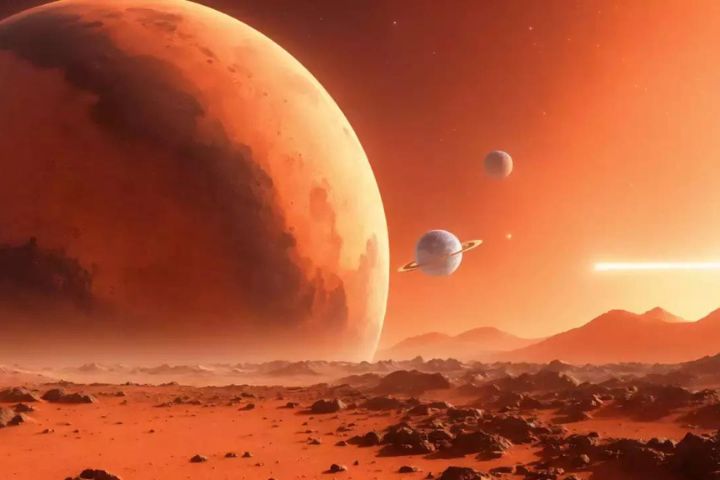Scientists have taken and unprecedented steps to warm Mars using iron or aluminum nanoparticles similar to glitter to make Mars more hospitable for human habitat by increasing the Martian atmosphere temperature by about 50°F over a decade.
Glittering Path to a Warmer Mars
Scientists present a method to warm Mars using iron or aluminum nanoparticles similar to glitter to make Mars more hospitable for human habitat by increasing the Martian atmosphere temperature by about 50°F over a decade.
The proposed method involves releasing tiny rod-shaped particles, called nanorods, into the Martian atmosphere at a rate of about eight gallons (30 liters) per second over a long period. The researchers suggest either shipping the nanorods or, more efficiently, sending tools to produce them directly on Mars, as the planet has plenty of iron and aluminum.
However, the researchers are cautious about the potential risks of altering another planet’s environment for human benefit. They stress the importance of studying whether Mars has or has any form of life, like subsurface microbes, and the need to protect its natural habitat. As Kite noted, while warming Mars with nanoparticles could be beneficial, the possible downsides are still uncertain.
Why Mars Is Habitable
At a 2014 NASA conference, Dr. Chris McKay, a planetary scientist, discussed how early settlers on Mars could use the planet’s resources to survive. One of the most accessible resources is the carbon dioxide (CO2) in Mars’ atmosphere, which can be turned into methane for fuel. Nitrogen and argon, also found in the atmosphere, can be used to pressurize habitats and reduce the risk of fires.
Mars also has water ice, especially at the poles and just below the surface. This ice can be purified for drinking or split into oxygen and hydrogen, which can be used as fuel. However, Martian soil contains perchlorates, which are toxic chemicals. While they pose a health risk, they can be managed with proper precautions. Interestingly, these chemicals might also be used to make solid rocket fuel.
The soil on Mars also contains nitrates, which can serve as fertilizer for growing crops. The planet’s rocks are rich in metal oxides, which can be mined for building materials. Fluorine in the rocks could help create greenhouse gases to gradually warm Mars’ atmosphere. By utilizing these resources, Mars could become not just a place to survive, but a second home for humans.



